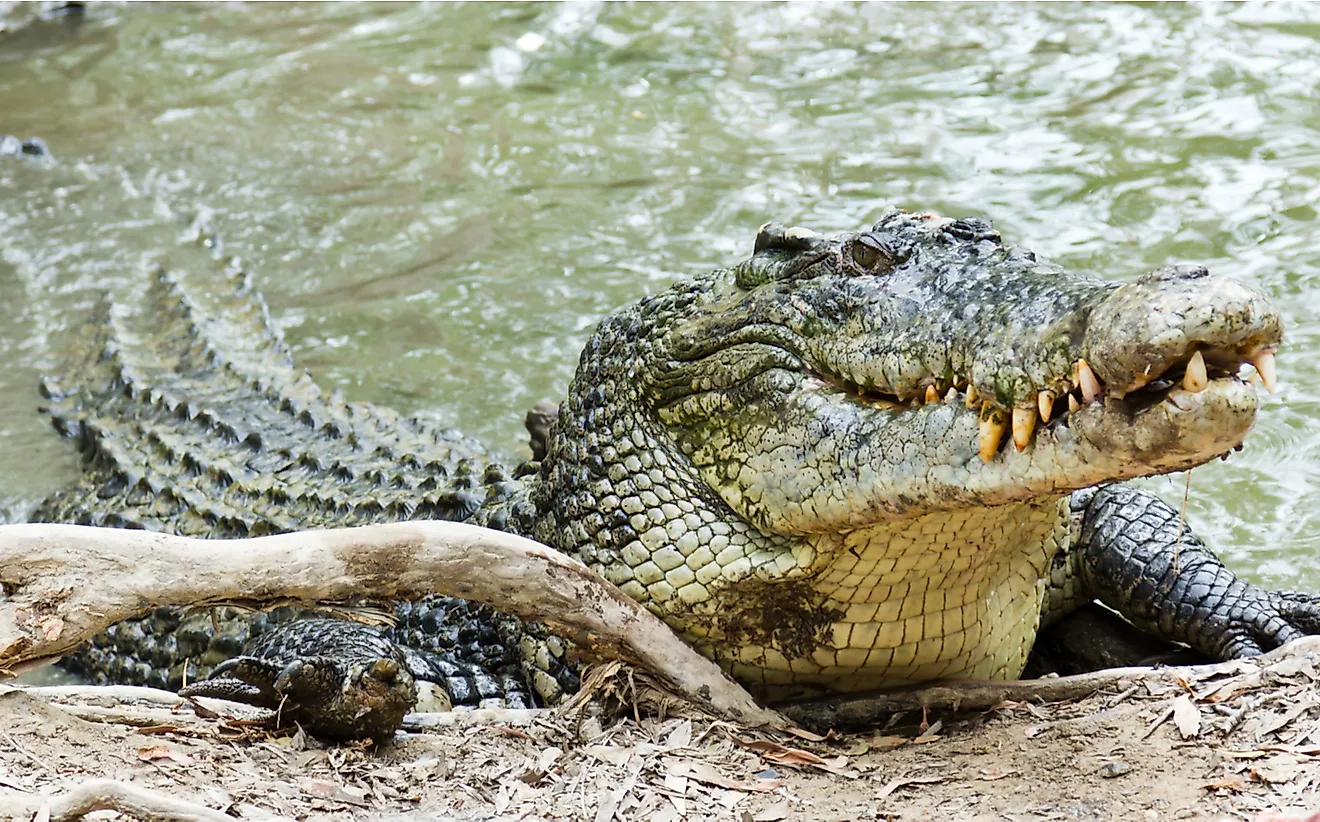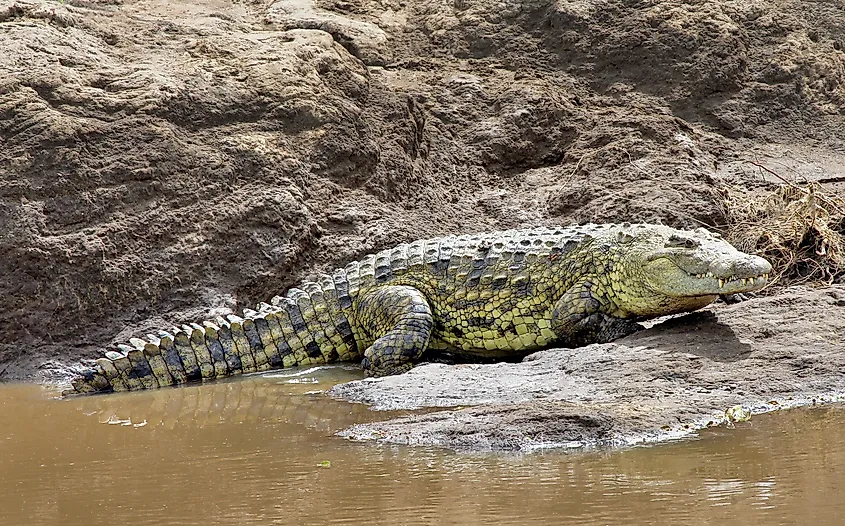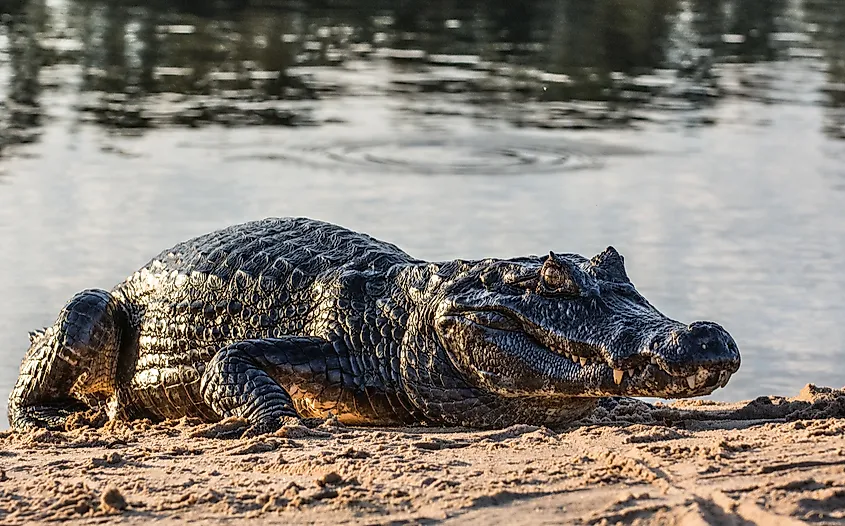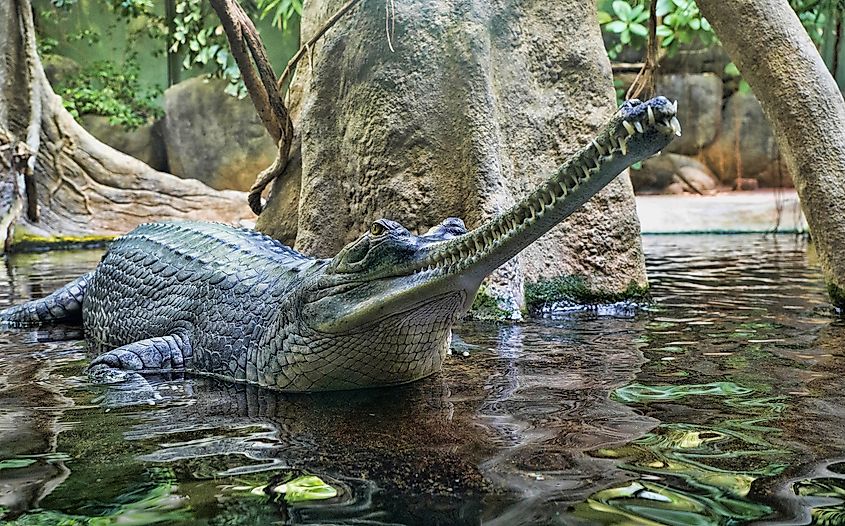The Largest Reptiles in the World

The first thing that comes to mind when you think of giant reptiles is "dinosaurs." Some ancient reptiles were the largest animals ever to live on the land: sauropod dinosaur fossils measure up to 30 meters in length! But, since you are unlikely to encounter a living one these days, let's talk about the modern reptiles who still swim, glide, walk and fly everywhere from open seas to hidden caves.
Saltwater, or Estuarine, Crocodile (Crocodylus porosus)
The Saltwater Crocodile is the largest living reptile in the world. The saltwater crocodile has a unique skill of traveling between areas separated by sea. It is a truly energy-conserving method of travel: they ride currents by simply floating, without much movement, and would sometimes wait for the current to take the direction they need. Satellite tracking showed a crocodile who traveled over 400 km in 20 days.
Their weight can go over 2200 pounds and they can grow to be almost 20 feet long. These intimidating reptiles can be found in Eastern India, Southeast Asian and Northern Australia. They are also loyal partners: male chooses their female and stays attached to it for years. Females are caring mothers: female Saltwater Crocodiles lay clutches of around 50 eggs and watch over them carefully until they hatch and even carry their young with them for the first few months of their lives.
Nile Crocodile (Crocodylus niloticus)

This giant reptile is the largest freshwater predator in Africa and Madagascar, as well as the most common. Although their impressive mass of up to 2200 pounds does not suggest that, Nile Crocodiles are actually "social" crocodiles: they share basking spots and food sources like schools of fish and big carcasses. Their strict hierarchy is determined by size.
Generally, Nile Crocodiles are relatively inert creatures. They spend sunny daytime basking with their jaws open: this unusual posture prevents overheating. To feed itself, Nile Crocodile utilizes a unique predation behavior of preying both within its natural habitat and out of it, which often results in unpredictable attacks. In the water, this species is an agile and swift hunter; on land, most hunting is done at night by ambush-hunting near forest trails or roadsides, up to 50 m from the water's edge.
Orinoco Crocodile (Crocodylus intermedius)
This critically endangered crocodile's habitat is almost entirely restricted to the Orinoco Basin in Colombia and Venezuela. Typically weighing up to 1400 lbs, Tthe Orinoco Crocodile comes in an interesting set of colors. These crocodiles are often pale green or yellow, with dark spots that help with camouflage. They can slightly change their color with age.
Their beautiful skin became the main reason for their current endangerment: they became highly desirable prey for hunters. During the 1940s to the 1960s, thousands of these animals were slaughtered, and the species came very close to extinction. Even though Orinoco crocodiles have been legally protected in Colombia since the 1970s, their numbers continued to shrink as their river habitats become polluted.
Black Caiman (Melanosuchus niger)

This predator occupies freshwater habitats as the largest known predator in the Amazon Basin with its extraordinary 2400 pounds of weight. The Black Caiman can take down and eat just about any animal that crosses its path. It possesses enough bite force to puncture turtle shells and boasts enough strength to drown large prey animals underwater.
The impressive Black Caiman is structurally different from other caiman species: it has distinctly larger eyes and beautifully dark and well-marked exterior, which helps it to camouflage itself during nocturnal hunts and to warm itself in the sun during the day. Once common, it was hunted to near extinction for its valuable skin. It is now making a comeback thanks to the conservation efforts.
American Crocodile (Crocodylus acutus)
This American giant, while often mistaken for the American Alligator, is a different reptile. While an American Alligator can survive in water temperatures of 7.2 °C and below for a while, an American Crocodile would drown due to hypothermia.
The American Crocodile is the only species other than the Saltwater Crocodile to live and thrive mainly in saltwater. It can inhabit river systems, but prefers salinity, resulting in the species congregating in brackish waters of coastal areas.
Unlike some other crocodilians, the American Crocodile is relatively shy. It often lies still on the shore, basking in the sun, and will usually run away and jump into the water to avoid confrontation.
Leatherback Sea Turtle (Dermochelys coriacea)
The largest turtle in the world, the Leatherback Sea Turtle is one of the deepest diving marine animals. They are also the fastest-moving reptiles. To allow for these titles, this turtle sacrificed the hard shell: its carapace consists of a layer of thin, tough, rubbery skin reinforced by thousands of tiny bone plates. It has seven distinct ridges to help streamline it while swimming and diving up to 3940 feet deep.
This impressive sea turtle feeds almost exclusively on jellyfish, a prey that is very poor in nutrients. Because colder waters are more likely to provide enough food to sustain these active animals, Leatherback Sea Turtles, unlike all other extant reptiles, became capable of maintaining high body temperatures independently from their environment.
Gharial (Gavial)

Found in India, the elegant Gharial, or Gavial, is easily recognizable by its narrow, long snout. Males have a characteristic bulbous growth on its tip: this bump is used to blow bubbles and create sounds during male displays.
The Gharial is the most consistently aquatic among all living crocodilians. Gharials rarely employ stealth to hunt as most other crocodilians do. The tail is well-developed and laterally flattened. Together with webbed feet, it provides impressive maneuverability in deep water. With their sharp interdigitated teeth to hold slinky fish and long narrow snout that meets little resistance in the water, they are well adapted to chase-hunt large fish.











